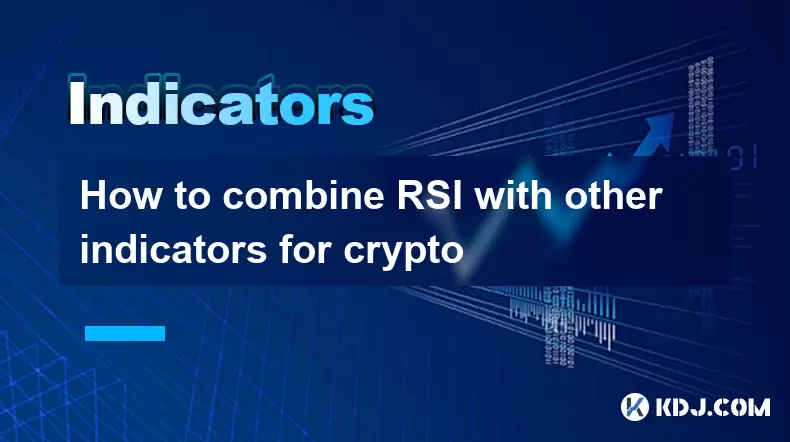-
 Bitcoin
Bitcoin $117,991.5647
-0.03% -
 Ethereum
Ethereum $2,966.4808
0.18% -
 XRP
XRP $2.8076
0.64% -
 Tether USDt
Tether USDt $1.0003
0.00% -
 BNB
BNB $689.9050
-0.63% -
 Solana
Solana $162.0407
-0.80% -
 USDC
USDC $0.9999
0.00% -
 Dogecoin
Dogecoin $0.1995
-1.51% -
 TRON
TRON $0.3001
-1.21% -
 Cardano
Cardano $0.7426
3.25% -
 Hyperliquid
Hyperliquid $47.7978
2.84% -
 Stellar
Stellar $0.4411
16.52% -
 Sui
Sui $3.4267
0.15% -
 Chainlink
Chainlink $15.3148
0.07% -
 Bitcoin Cash
Bitcoin Cash $506.5880
-1.91% -
 Hedera
Hedera $0.2222
12.41% -
 Avalanche
Avalanche $21.2049
1.67% -
 UNUS SED LEO
UNUS SED LEO $9.0606
-0.19% -
 Shiba Inu
Shiba Inu $0.0...01325
-0.86% -
 Toncoin
Toncoin $2.9979
0.32% -
 Litecoin
Litecoin $94.3717
1.13% -
 Polkadot
Polkadot $3.9873
-0.29% -
 Monero
Monero $336.1497
0.92% -
 Dai
Dai $0.9999
-0.01% -
 Uniswap
Uniswap $8.5189
-0.60% -
 Ethena USDe
Ethena USDe $1.0005
-0.04% -
 Pepe
Pepe $0.0...01236
-0.92% -
 Bitget Token
Bitget Token $4.4002
-0.23% -
 Aave
Aave $303.5433
1.05% -
 Bittensor
Bittensor $391.1314
-0.35%
Bollinger Bands explained for crypto beginners
Bollinger Bands help crypto traders identify volatility, overbought/oversold conditions, and potential breakouts by plotting dynamic support and resistance levels around price movements.
Jul 12, 2025 at 09:14 am

What Are Bollinger Bands?
Bollinger Bands are a popular technical analysis tool used by traders to understand price volatility and potential market trends. Developed by John Bollinger in the 1980s, this indicator consists of three lines plotted on a price chart: the upper band, the middle band (which is typically a simple moving average), and the lower band. These bands dynamically adjust based on the asset's price movements and standard deviation.
In crypto trading, Bollinger Bands help identify overbought or oversold conditions, breakouts, and potential reversals. They expand when volatility increases and contract during periods of low volatility, making them especially useful for analyzing highly volatile assets like cryptocurrencies.
How Are Bollinger Bands Calculated?
Understanding how Bollinger Bands are calculated is crucial for interpreting their signals accurately. The standard settings use a 20-period simple moving average (SMA) as the middle line. Then, two standard deviations above and below this SMA form the upper and lower bands respectively.
- Middle Band = 20-day Simple Moving Average
- Upper Band = Middle Band + (2 × Standard Deviation of Price)
- Lower Band = Middle Band – (2 × Standard Deviation of Price)
This calculation ensures that the bands widen during high volatility and narrow when the market is calm. In crypto markets, where sudden price swings are common, these bands provide dynamic support and resistance levels that adapt to changing conditions.
Interpreting Bollinger Bands in Crypto Charts
When analyzing crypto charts, traders look at how prices interact with the Bollinger Bands to gauge potential market behavior. If the price touches or moves outside the upper band, it may indicate overbought conditions, suggesting a possible pullback. Conversely, if the price hits or dips below the lower band, it could signal oversold territory, potentially leading to a bounce.
However, it's essential to remember that touching a band doesn't always mean an immediate reversal. Sometimes, strong trends can cause prices to ride along one of the bands for extended periods. For example, in a strong bullish move, Bitcoin might stay near the upper Bollinger Band, signaling continued momentum rather than overbought exhaustion.
Using Bollinger Bands for Entry and Exit Points
One practical application of Bollinger Bands is identifying potential entry and exit points in the crypto market. Traders often combine them with other indicators like RSI or MACD to confirm signals before executing trades.
For instance:
- A trader might look for a price rejection from the lower band combined with a bullish candlestick pattern to enter a long position.
- Alternatively, a touch of the upper band accompanied by bearish divergence on the RSI could serve as a sell signal.
Some traders also watch for the "Bollinger Squeeze," which occurs when the bands contract tightly around the price. This narrowing suggests a period of consolidation and often precedes a sharp breakout in either direction. Recognizing this pattern early can give traders an edge in anticipating explosive price moves.
Common Mistakes Beginners Make with Bollinger Bands
Despite their usefulness, many beginners misuse Bollinger Bands due to misunderstandings about their function. One common error is assuming that a price touching the upper band is always a sell signal, or that a touch of the lower band is automatically a buy signal. As mentioned earlier, strong trends can sustain such touches without immediate reversals.
Another mistake is using Bollinger Bands in isolation without confirming signals with volume or other indicators. Since crypto markets are prone to false breakouts and pump-and-dump schemes, relying solely on Bollinger Bands can lead to poor decision-making. It’s vital to incorporate additional tools to filter out noise and avoid premature entries or exits.
Frequently Asked Questions
Can I use Bollinger Bands on all timeframes in crypto trading?
Yes, Bollinger Bands can be applied across different timeframes—from minute charts to weekly charts. However, shorter timeframes tend to produce more frequent but less reliable signals, while longer timeframes offer fewer but potentially stronger trade setups.
Do Bollinger Bands work well with all cryptocurrencies?
They can be applied to any cryptocurrency, but they perform best on assets with sufficient liquidity and consistent price action. Low-cap altcoins with erratic price swings may generate misleading signals due to thin order books and manipulation risks.
Is it safe to rely solely on Bollinger Bands for trading decisions?
No, Bollinger Bands should not be used in isolation. Combining them with volume indicators, trendlines, or oscillators like RSI improves accuracy and reduces false signals, especially in the fast-moving crypto environment.
What does it mean when Bollinger Bands run parallel?
When the bands remain consistently parallel and the price stays within them, it indicates a range-bound or sideways market. During such phases, traders can consider range-trading strategies, buying near the lower band and selling near the upper band.
Disclaimer:info@kdj.com
The information provided is not trading advice. kdj.com does not assume any responsibility for any investments made based on the information provided in this article. Cryptocurrencies are highly volatile and it is highly recommended that you invest with caution after thorough research!
If you believe that the content used on this website infringes your copyright, please contact us immediately (info@kdj.com) and we will delete it promptly.
- Little Pepe, Pepe Coin, and Bonk: Meme Coin Mania Sweeping Crypto in 2025!
- 2025-07-13 22:36:38
- ADA, NEAR, BlockDAG: Crypto Trends and Insights You Can't Miss (NYC Style)
- 2025-07-13 22:36:38
- TRUMP Tokens Unlocked: A Deep Dive into World Liberty Financial and Aqua 1's $100M Investment
- 2025-07-13 22:50:37
- Cryptos Under $0.10: Solana's Successors and the Top 10 Potential
- 2025-07-13 22:50:37
- Crypto Week, TRUMP Tokens, and Crypto Bills: Navigating the Wild West of Digital Assets
- 2025-07-13 23:05:35
- Bitcoin's Rally: Consolidating for the Next Leap?
- 2025-07-13 23:05:35
Related knowledge

Advanced RSI strategies for crypto
Jul 13,2025 at 11:01am
Understanding the Basics of RSI in Cryptocurrency TradingThe Relative Strength Index (RSI) is a momentum oscillator used to measure the speed and chan...

Crypto RSI for day trading
Jul 12,2025 at 11:14am
Understanding RSI in the Context of Cryptocurrency TradingThe Relative Strength Index (RSI) is a momentum oscillator used to measure the speed and cha...

Crypto RSI for scalping
Jul 12,2025 at 11:00pm
Understanding RSI in the Context of Crypto TradingThe Relative Strength Index (RSI) is a momentum oscillator widely used by traders to measure the spe...

What does an RSI of 70 mean in crypto
Jul 13,2025 at 06:07pm
Understanding the RSI Indicator in Cryptocurrency TradingThe Relative Strength Index (RSI) is a widely used technical analysis tool that helps traders...

How to avoid RSI false signals in crypto
Jul 13,2025 at 06:21pm
Understanding RSI and Its Role in Crypto TradingThe Relative Strength Index (RSI) is a momentum oscillator used to measure the speed and change of pri...

How to combine RSI with other indicators for crypto
Jul 12,2025 at 08:35am
Understanding the Role of RSI in Crypto TradingThe Relative Strength Index (RSI) is a momentum oscillator that measures the speed and change of price ...

Advanced RSI strategies for crypto
Jul 13,2025 at 11:01am
Understanding the Basics of RSI in Cryptocurrency TradingThe Relative Strength Index (RSI) is a momentum oscillator used to measure the speed and chan...

Crypto RSI for day trading
Jul 12,2025 at 11:14am
Understanding RSI in the Context of Cryptocurrency TradingThe Relative Strength Index (RSI) is a momentum oscillator used to measure the speed and cha...

Crypto RSI for scalping
Jul 12,2025 at 11:00pm
Understanding RSI in the Context of Crypto TradingThe Relative Strength Index (RSI) is a momentum oscillator widely used by traders to measure the spe...

What does an RSI of 70 mean in crypto
Jul 13,2025 at 06:07pm
Understanding the RSI Indicator in Cryptocurrency TradingThe Relative Strength Index (RSI) is a widely used technical analysis tool that helps traders...

How to avoid RSI false signals in crypto
Jul 13,2025 at 06:21pm
Understanding RSI and Its Role in Crypto TradingThe Relative Strength Index (RSI) is a momentum oscillator used to measure the speed and change of pri...

How to combine RSI with other indicators for crypto
Jul 12,2025 at 08:35am
Understanding the Role of RSI in Crypto TradingThe Relative Strength Index (RSI) is a momentum oscillator that measures the speed and change of price ...
See all articles























































































